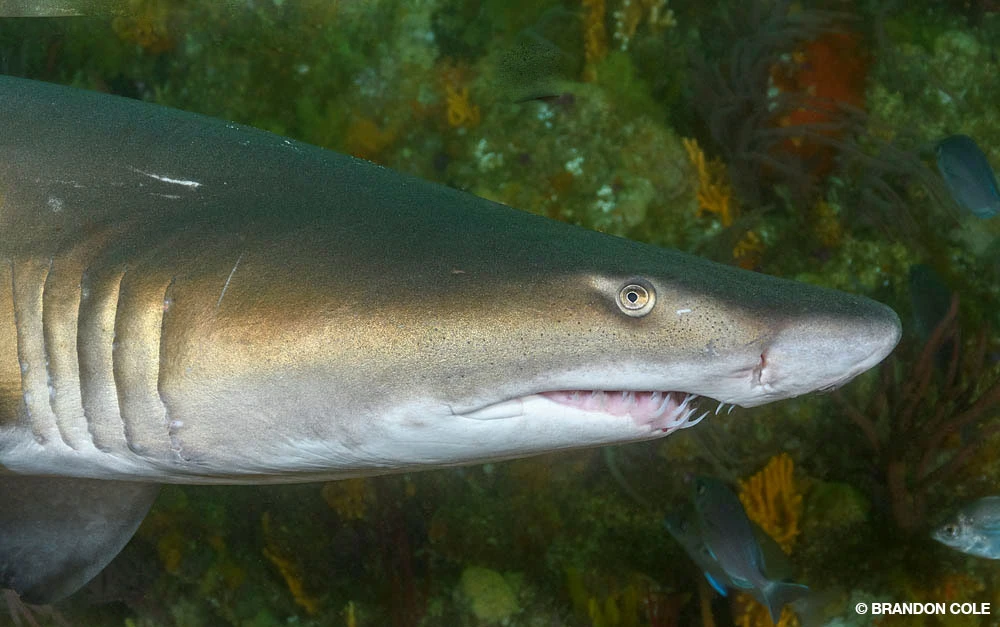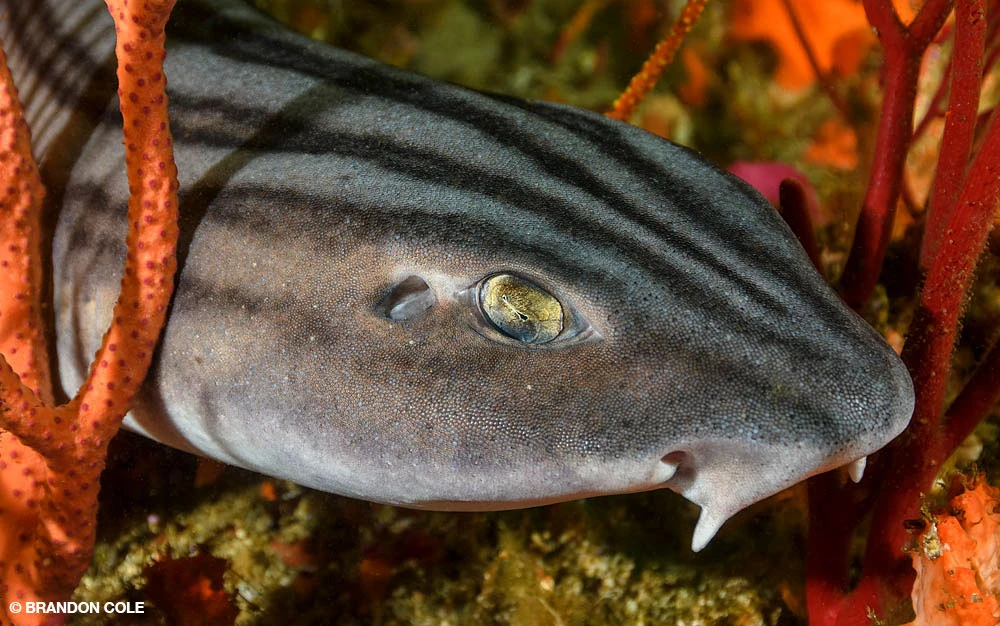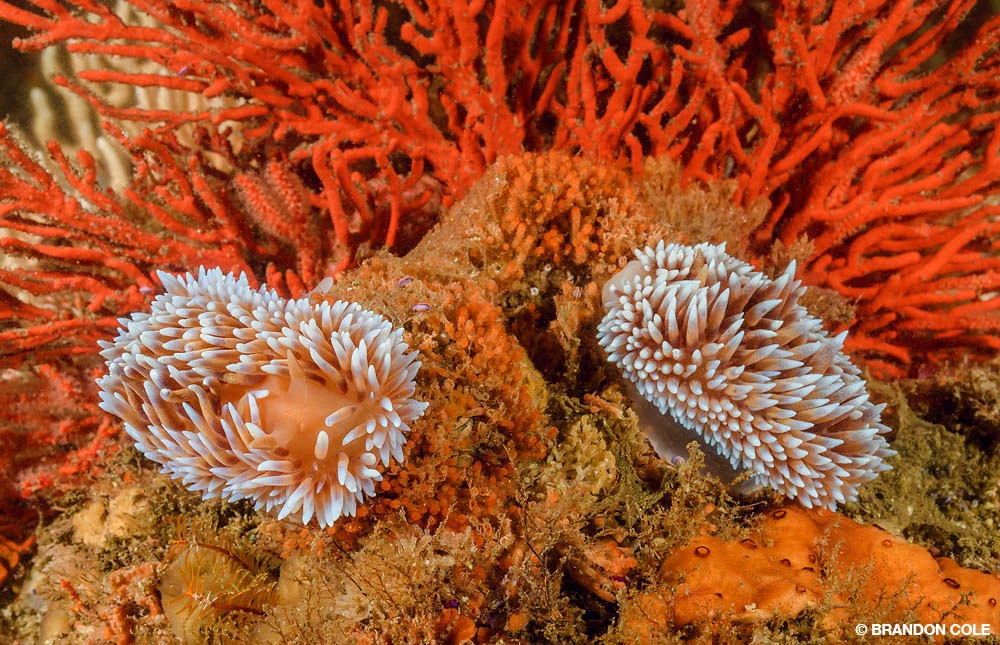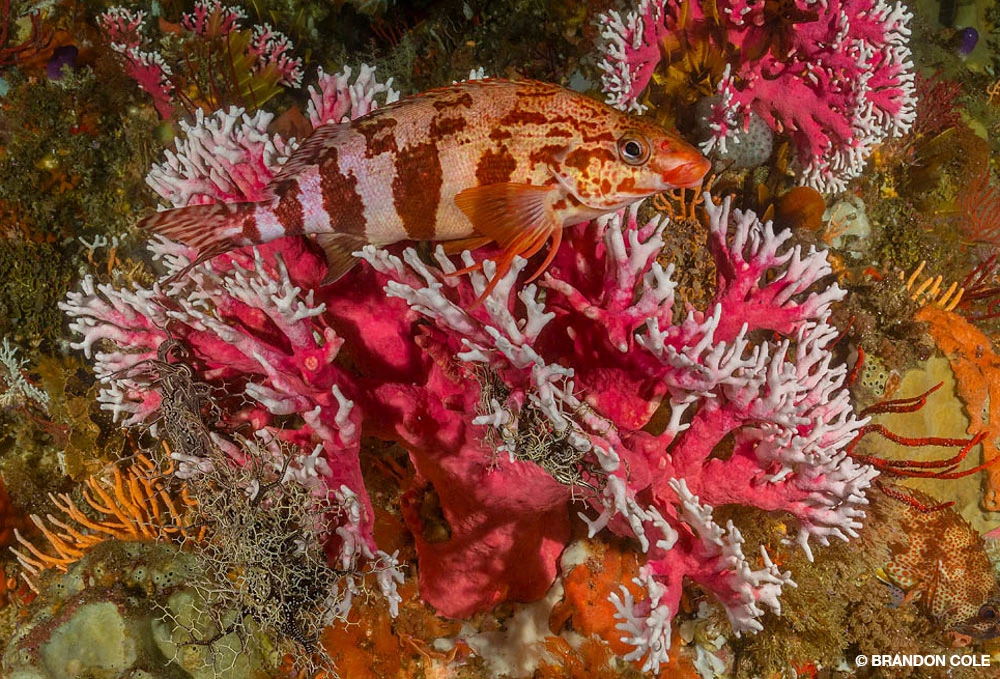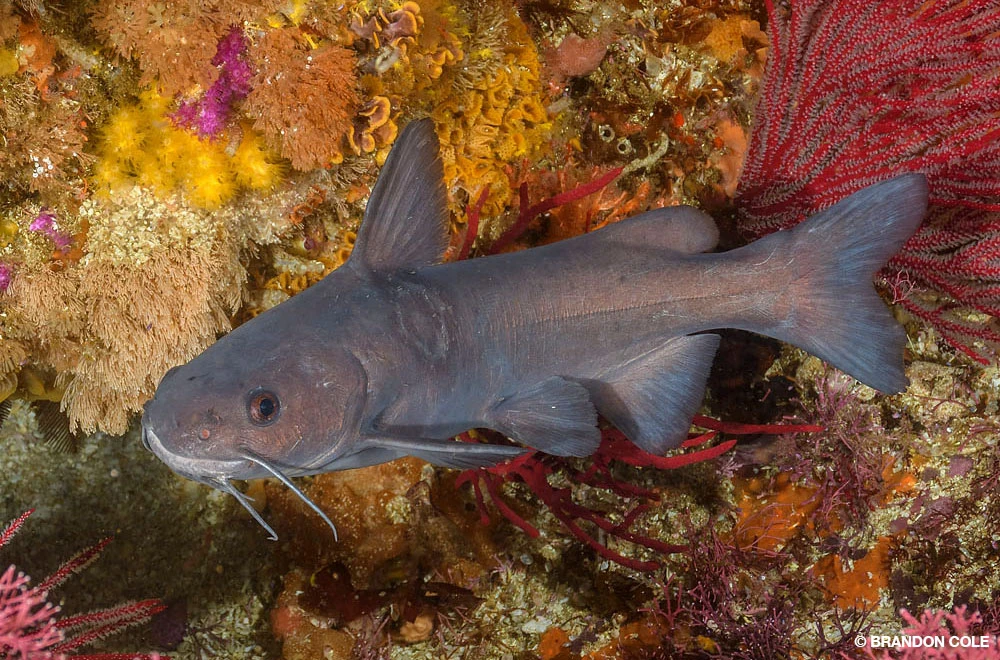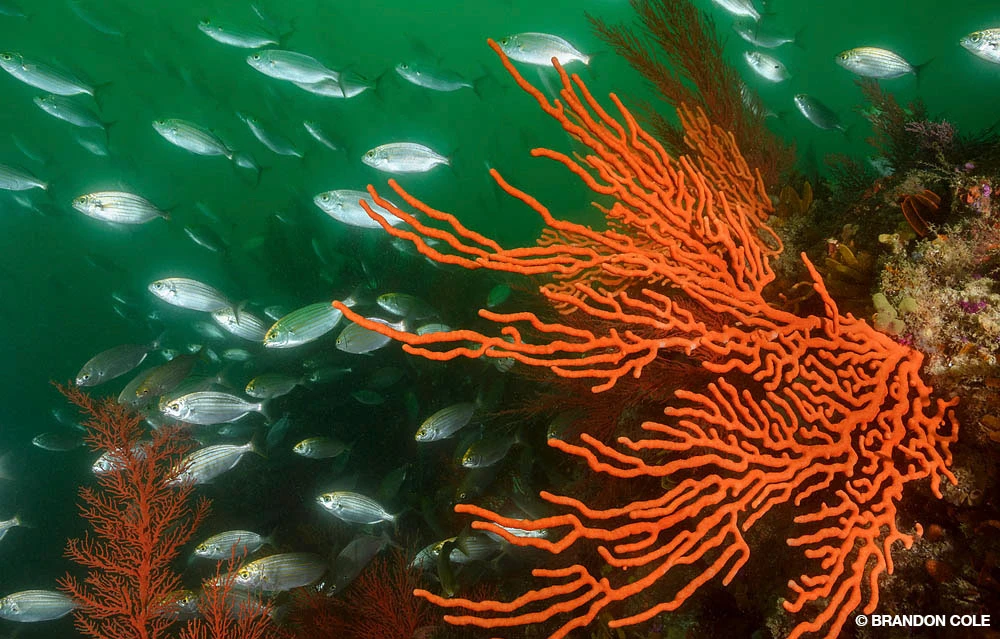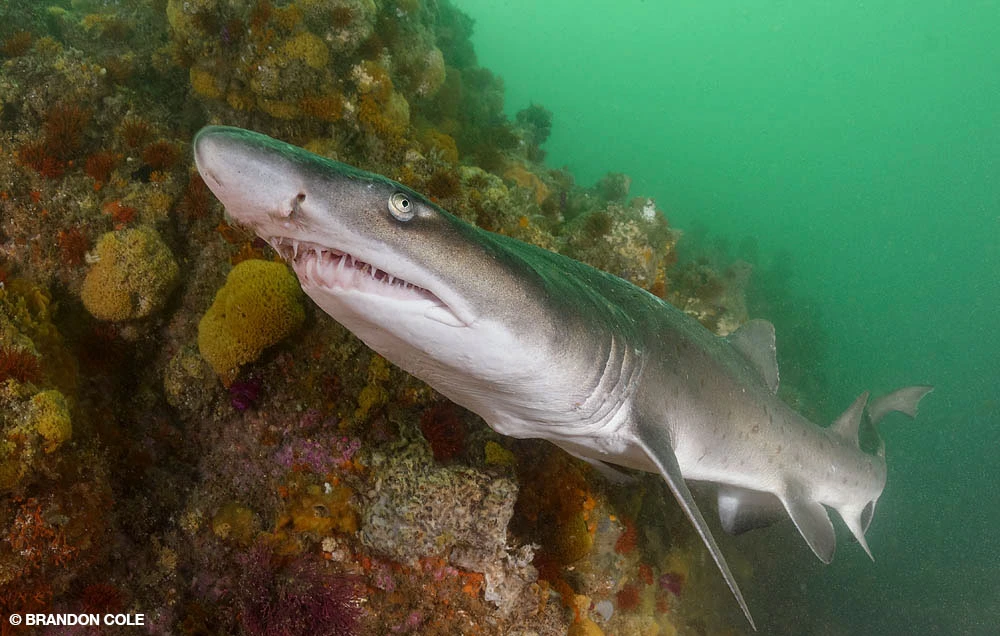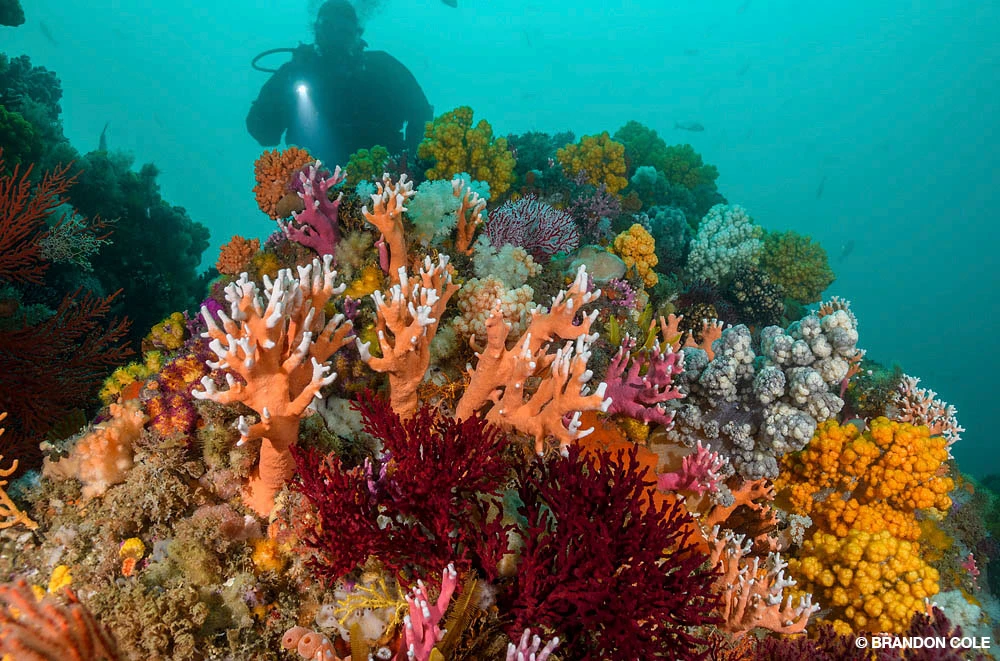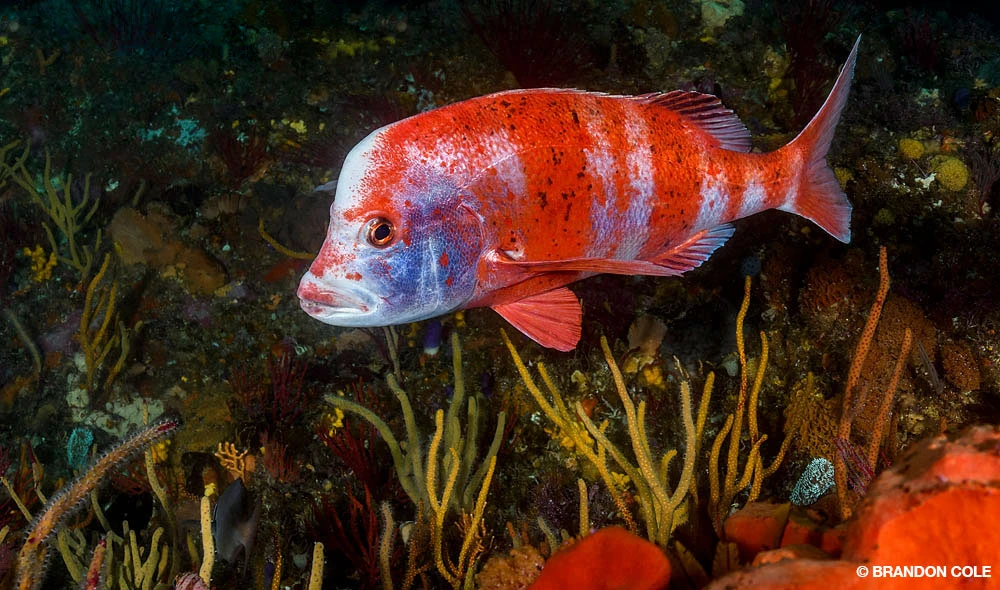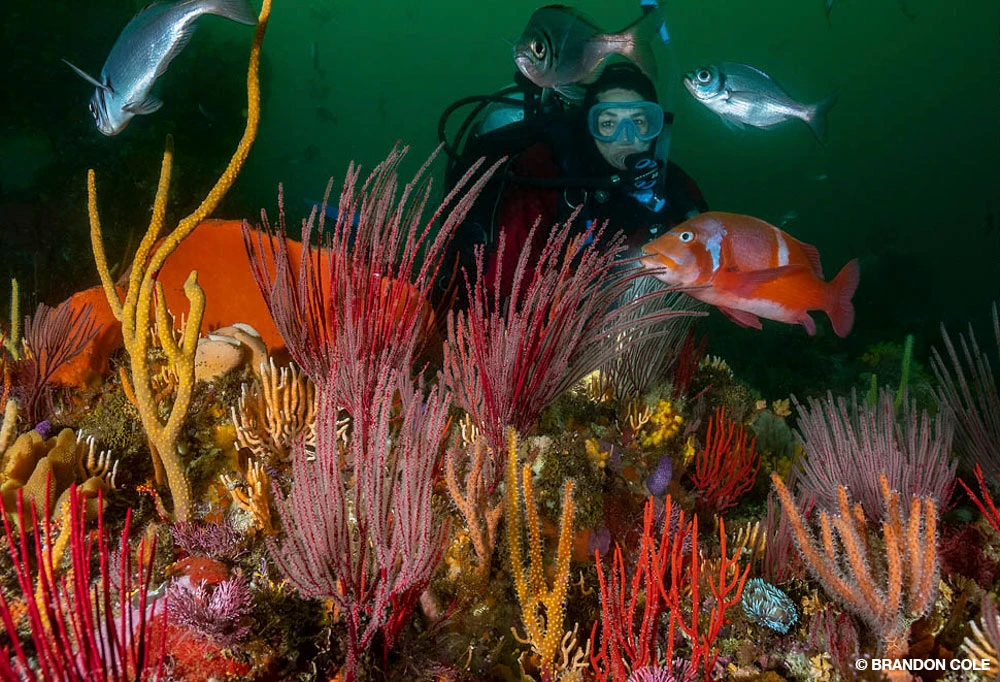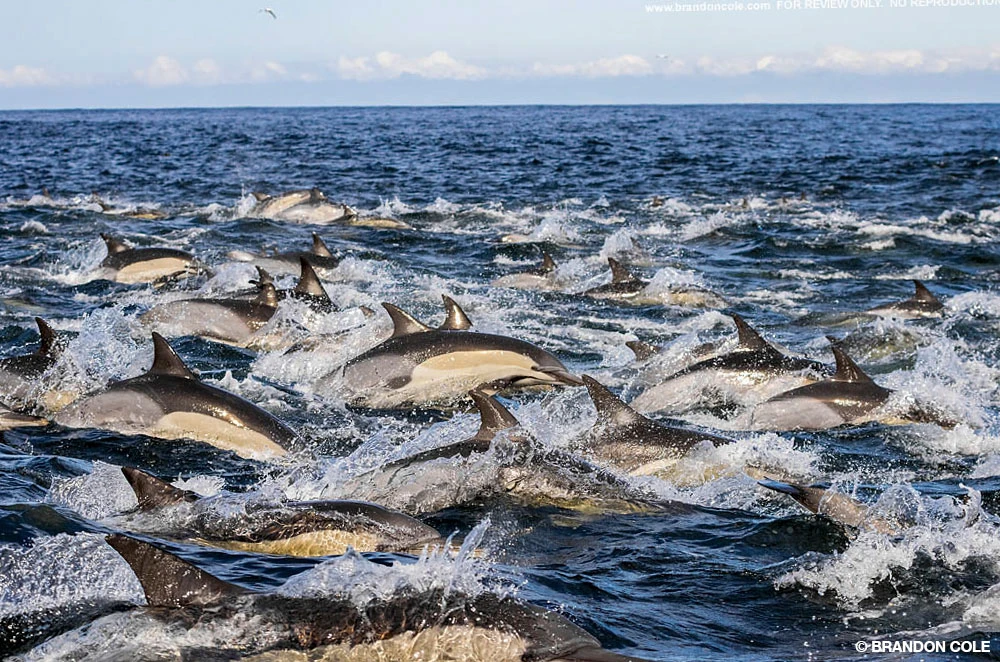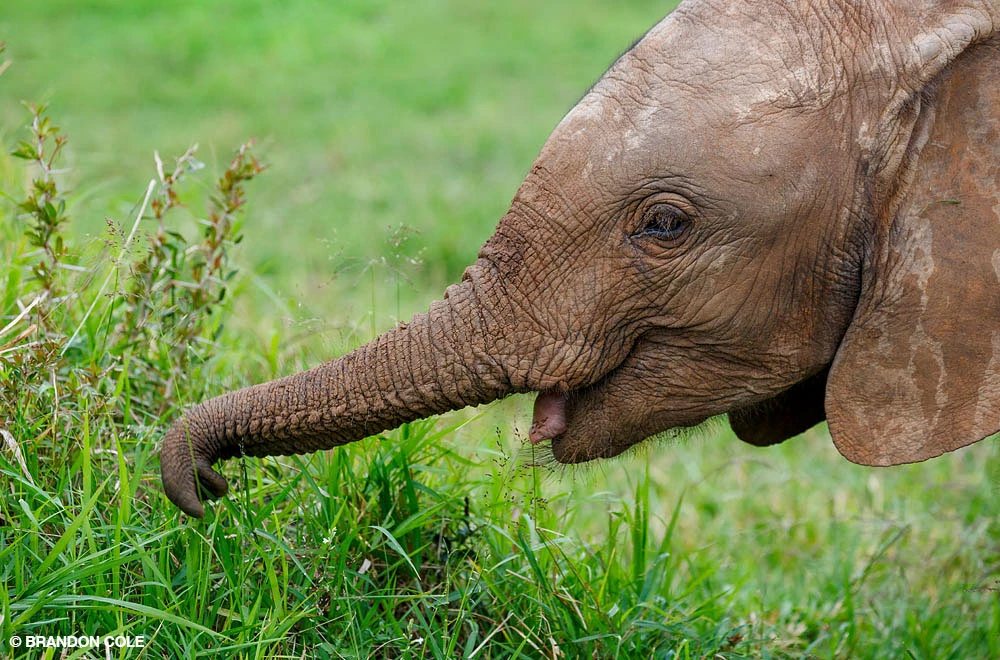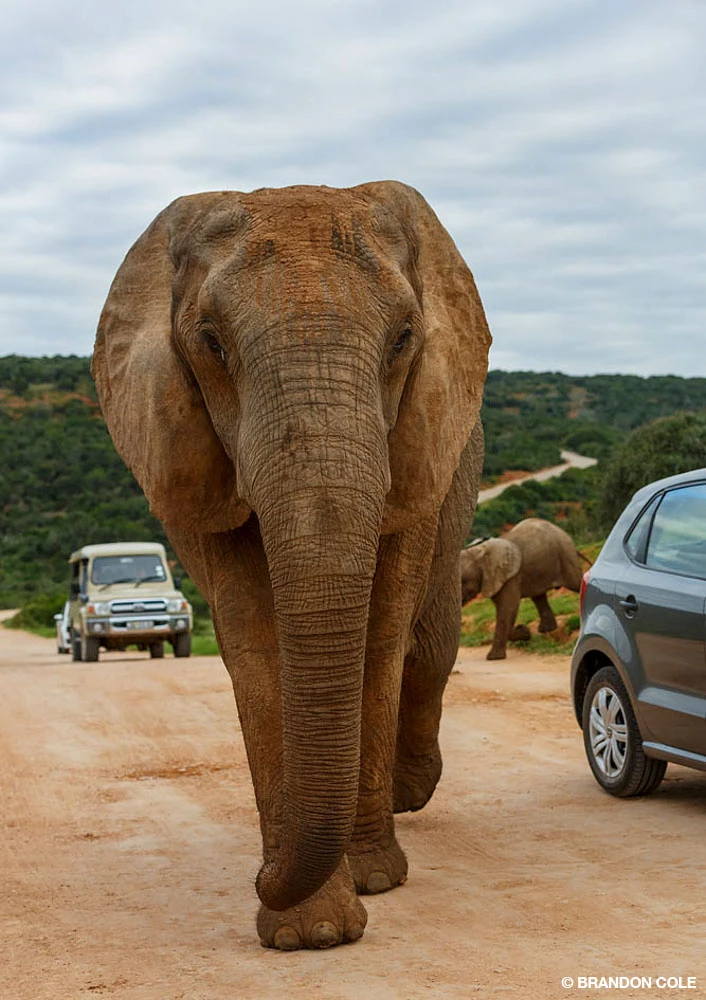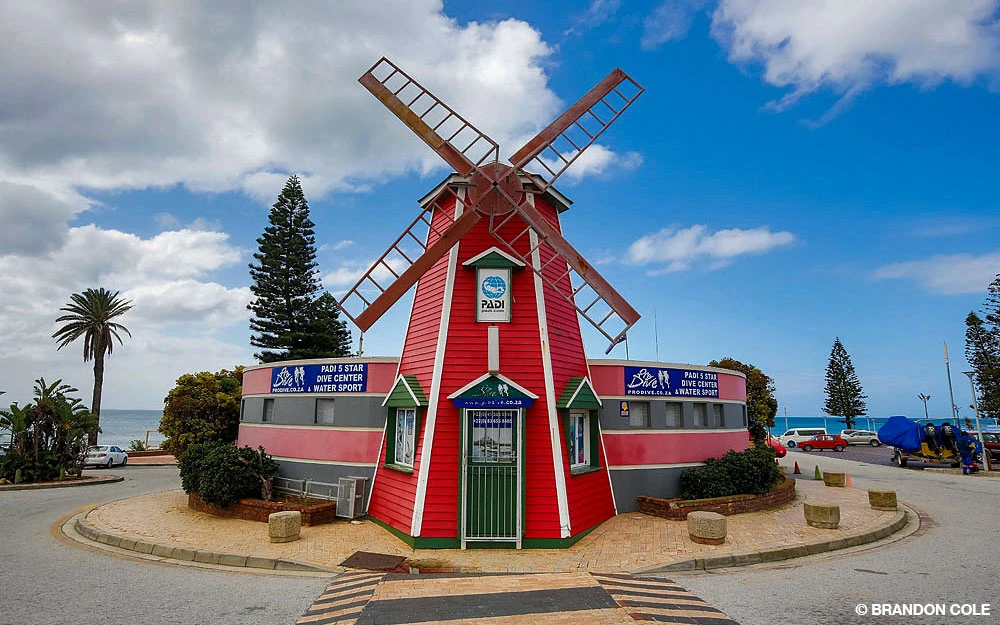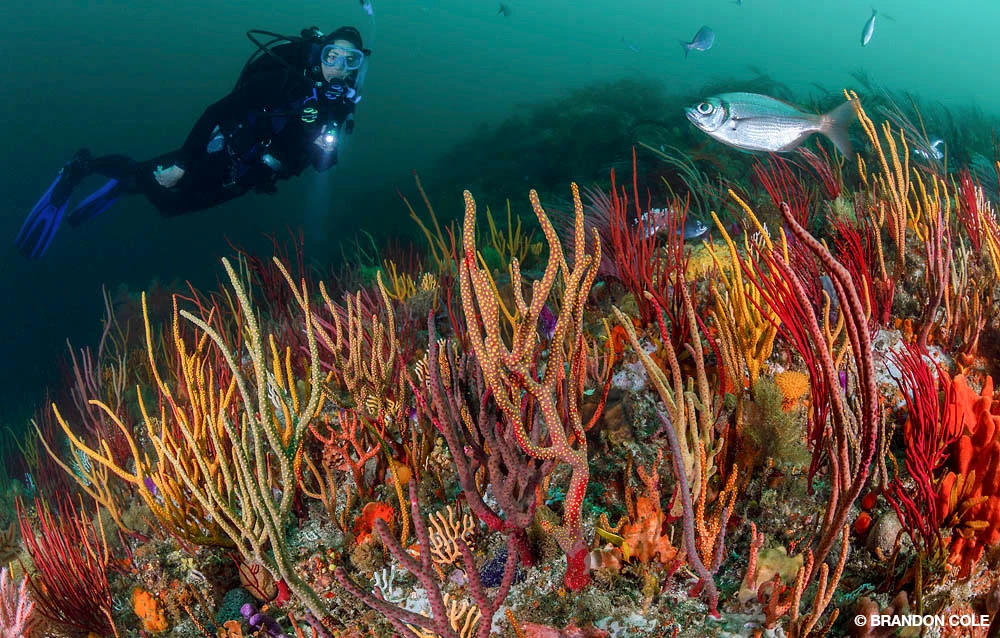It is difficult to step out from the shadow cast by a famous family member long in the spotlight and to stake one’s own claim and create a different identity. I was reminded of this while reflecting on my relationship with diving in South Africa.
During six trips there over a 25-year span, I never thought much about conventional reef diving opportunities. The shock-and-awe great white shark cage diving and surface photography off Gansbaai and in False Bay first attracted me and remained my focus. I also obsessively pursued the sardine run, snorkeling until my lungs almost burst to catch this moveable feast on its way up the coast toward Durban.
After seeing some stunning wide-angle pictures of reefs near Port Elizabeth a couple of years ago, however, I realized I needed to change gears. Exploring South Africa a different way would add a new — at least for me — third dimension to the undersea adventure waiting at the base of the Mother Continent.
Resplendent Reefs
The scenery under our fins is fantabulous. Sea fans and whips stretch to the horizon, swaying overtop sponges and bryozoans. Evans Peak is a riot of intense colors — red, yellow, purple, and orange. The artful tangle of life is lush and luminous and looks like a rainbow of flames dancing against a jade-colored dusking sky. Goggle-eyed, silvery fransmadams glint and shimmer as they swim along the tableau, while other, more cryptic fish are tucked in the branches of gorgonians or resting on the rich turf. A 3-foot (1-meter) pyjama catshark slither-walks through apricot and burgundy whips at 65 feet (20 m) deep. We slip down to 80 feet (24 m) for a fleeting glimpse of a retreating ragged-tooth shark. Thankfully, we will have many more encounters with this creature in the coming week.
Our first dive in Algoa Bay thoroughly impressed. Evans Peak is a large seamount more than 10 miles (16 kilometers) offshore Port Elizabeth that is exposed to the weather, so you cannot dive it every day. We were fortunate there but less so the first time we dived Riy Banks, another premiere site that is likewise a distant, exposed seamount but on the bay’s opposite side. The wind was nothing to worry about that day, but the surge below the surface was formidable. A sizeable swell was rolling from the open Indian Ocean into Algoa Bay, and even at 90 feet (27 m), it carries us forward from one ridgetop to the next. Fifteen seconds later, the invisible, irresistible hand of Neptune whisks us back across the gulley, repeating this back-and-forth lurching lullaby again and again. We can’t fight the sea’s strength, and creating quality photos was tricky, so we relax and flow with it. The reef’s eye candy at this advanced site was still first-rate.
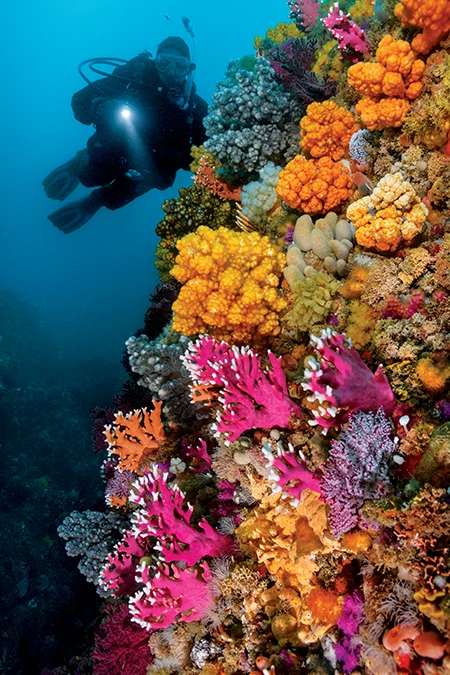
The next day the swell has subsided, and we are jazzed to try the dive again. Under a pewter-colored sky, we backroll off the boat and follow the guide down to the reef top at 60 feet (18 m). He carries a reel and tows a surface buoy attached to a long line so the boat captain above can easily track our movements. It is a much better method than simply following our bubbles, especially when the surface is choppy and there’s no shallow reef underneath and no designated ascent point. This way we can confidently do our safety stop and be picked up quickly, even if we are drifting in open water.
The visibility is a modest 15 to 20 feet (4.6 to 6 m), and the water is 62°F (16.7°C). The brightly painted seascape makes it seem warmer. Within no time we are exploring a Dr. Seuss’ garden of gorgonians and sponges and meeting cool critters with catchy names such as the red stumpnose (Miss Lucy fish) and Cape knifejaw. My wife, Melissa, spots an octopus, but I struggle to line up a clean shot because of the dense polychrome invertebrate jungle. A red roman — a large and handsome fish in the seabream family — comes over to hover above me, hungrily eyeing my tasty calamari subject. The octopus proves too clever for both of us, however, and slyly disappears into a hole in the reef. I am more successful photographing an exquisitely tattooed leopard catshark and a pair of silvertip nudibranchs.
There is great macro life on this and many other Port Elizabeth reefs, but it can be a hard decision for a photographer to submerge with a lens limited to only a 15- or 20-degree field of view when such picturesque wide-angle compositions of fantastic fans and the like await in such abundance. Luckily for me, my dive buddy regularly volunteers to carry a second camera, enabling us to capture the full spectrum on the same dive.
We burn most of our bottom time at Riy Banks between 60 and 80 feet (18 and 24 m), but we pop down a sheer wall to 100 feet (30 m) for a quick look before begrudgingly working our way slowly up our guide’s line. A school of giant yellowtails appears from out of nowhere during our safety stop to spin around us, and we end the dive dizzy but delighted.
Snaggletooth Smiles
I am thrilled to finally experience this other underwater side of South Africa, but I’m also a bit cross with myself because I’ve missed out for so many years. Our operator in Port Elizabeth has been diving these reefs for decades. Where was I?
What matters most, however, is the here and now. We load our gear into the 26-foot (8-m) rigid inflatable boat (RIB) at the dive center and then walk down to the beach with six other divers. Our skipper pushes the boat just into the gentle surf, and we line up alongside the RIB’s pontoons to help the crew heave-ho. With the boat’s outboards revving, we get it into deeper water before scrambling on board. Beach launches in South Africa are ingenious and energetic.
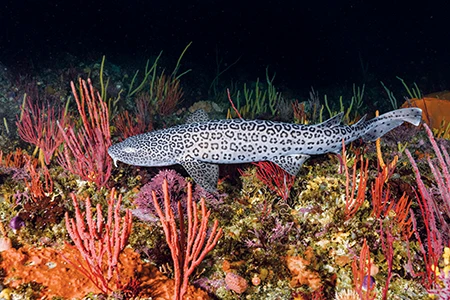
Some of our fellow guests today are newer in their dive journeys, but all of us are keen to see sharks. We zoom out to popular Shark Alley, a mellow, shallow nearshore site that regularly delivers multiple sightings of ragged-tooth sharks. Usually called “raggies” in South Africa, this shark species answers to various names around the world, including gray nurse along Australia’s central east coast and sand tiger among the shipwrecks off North Carolina. Over a 50-minute dive at Shark Alley, I encounter at least six and maybe 10 different individuals measuring from 3.5- to almost 8-feet (1- to 2.4-m) long who swim slowly through the reef’s many alleyways.
A shark’s size and sex, spot patterns, and unique skin markings, such as scratches and fin nicks, help distinguish one from another. The terrifying dentition always on full display belies their true, harmless nature. Our guide says close approaches occur more frequently at this site than at Evans Peak because many more people dive Shark Alley, and the raggies have become acclimated to our presence.
A good way to create impactful photographs of them is to anticipate a shark’s trajectory and position yourself in front, just to the side at their level or lower, and then hope it continues on that vector to pass near you. Sometimes this strategy works, and a shark’s ghoulish grin flashes at you from point blank. At other times, a shark may quickly turn away before you can get the shot, so it pays to have a quick trigger finger.
The nearby Shyshark Reef is another shallow dive that often has — you guessed it — cute little shysharks. We also find Algoa Bay’s usual assortment of lovely sea fans, ranging from hand-sized, white specimens to pumpkin-colored, sinuous fans as big as a person. There are also lovely sea slugs, golden feather stars, and schooling strepies, which are small, silver fish with brassy stripes.
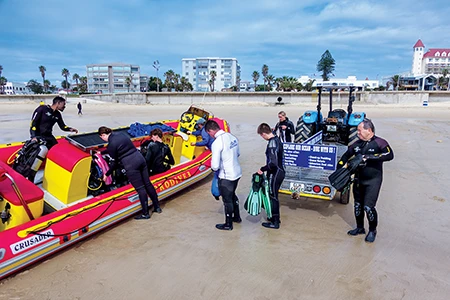
The Run Begins Here
Visiting Port Elizabeth in the Eastern Cape region does not necessarily mean opting out of South Africa’s iconic annual sardine run. Why not have both seamount diving and sardine snorkeling? Algoa Bay is typically the starting place for the world-renowned mass migration of millions of sardines swimming north along the country’s eastern seaboard.

While most people trying to catch the run base themselves hundreds of miles up the coastline in Port St. Johns during June and July, if your timing is right — normally April and May — it’s possible to experience at least some of the run’s glorious mayhem out of Port Elizabeth. The cast of characters in this drama features common dolphins, whose collective hunting efforts cause the sardine baitballs to form, along with Bryde’s whales, bronze whaler sharks, and the hapless little fish upon which everything is hoping to feed. Fur seals, birds (gannets and sometimes penguins), and the odd billfish also join the all-you-can-eat baitfish bonanza.
Since we are here in mid-April and our operator caters to both scuba fans and sardine run devotees, we sign up for a couple of excursions far out into Algoa Bay to search for baitballs. As luck would have it, the main event is commencing a couple of weeks late this year. We see a few Bryde’s whales, clouds of squawking, dive-bombing gannets, and hundreds of common dolphins. Murky water and super-fast sardines mean our underwater viewing and shooting opportunities are few and frenetic. One afternoon, however, we follow the dolphins for two spectacular hours, racing in our RIB alongside the herd as the dolphins churn the water white in their feeding fervor.

From Sardines to Safari
Weather happens along South Africa’s coastline. When the seas kick up enough to prevent safe diving, look inland for an excellent wildlife experience one hour from Port Elizabeth. Addo Elephant National Park is the country’s third-largest national park and home to more than 600 elephants. There are also buffaloes, rhinos, lions, and leopards — nicely rounding out Africa’s big five safari celebrities — plus zebras, antelopes, warthogs, hyenas, birds, and much more.
The top highlights of our driving excursion through the park were watching playful baby elephants wrestling each other and bugging the adults and a ginormous bull nonchalantly walking out from the bush to tower over our tiny rental car. Seeing flightless dung beetles rolling the elephant excrement balls on which the industrious bugs feed was a close second. That’s not something you enjoy on your average scuba dive.


The Wild Side
A shift in the wind gives us an opportunity to dive on the west side of Cape Recife — the “wild side,” according to our smiling divemaster. Many ships met their tragic end on the treacherous reefs around this point on which a lighthouse now stands.
We give the point and its calamitous past a wide berth and arc around to Thunderbolt Reef, where a collection of pinnacles rises from the seabed 80 feet (24 m) below. The site’s spikey profile contrasts with the broad seamounts we have explored so far in eastern Algoa Bay. The marine life decorating the spires is also subtly different. Cauliflower-shaped clumps of soft corals in yellow, orange, and an unusual gray sprout from the pinnacles’ sides between 60 and 80 feet (18 and 24 m). I don’t remember seeing these at Riy Bank or Evans Peak.
Thunderbolt’s colonies of noble coral in bubblegum pink, salmon, and fuchsia remind me of the hydrocoral I have fondly photographed half a world away near Monterey, California. A redfingers fish — named for the long, claw-like, scarlet rays extending from its pectoral fins — perches atop one colony. There are purple octocorals that resemble clusters of grapes, frilled nudibranchs eating soft corals, and sea stars I’ve never seen before. Klipfish scoot about mounds of bryozoans, sea catfish lurk under ledges, and doublesash butterflyfish sidle up next to sea fans. The ocean’s most visually striking basket stars grip tightly to some of the fiery fans. So many fish and invertebrates here at the bottom of the world are endemic, living nowhere else on the planet.

As we skim over the waves at 20 knots on our way back to the dive center, I am looking forward to another high-speed beach landing when our divemaster asks where we would like to dive tomorrow, weather permitting. The group unanimously votes to repeat Thunderbolt Reef. Absolutely. I dream big and push further, voicing that I’d also like to revisit the far side of Algoa Bay, specifically Evans Peak, for another look at its resplendent reeftop.
Those fantabulous whips and gorgonians are pure poetry in motion. The new-to-me fish species and the raggies gliding through the shadows — all of this taken together is a canvas on which I have not yet finished my photographic painting. It is a portrait I am compelled to create in my mission to know and show the other side of South Africa’s wild and wonderful waters.
How To Dive It
Getting there:Port Elizabeth — officially named Gqeberha since 2021 but still widely called Port Elizabeth or P.E. — is a scenic nine-hour drive through charming wine country or a 75-minute flight from Cape Town. You can also easily reach it by air from Johannesburg.
Conditions: Weather and sea conditions all along South Africa’s coast are highly variable and quick to change. Diving in Algoa Bay is possible year-round but generally best from January to July. Strong winds, big waves, powerful surge, cool water, and poor visibility are all possible and can sometimes make diving challenging. Ocean temperatures range between about 57°F and 72°F (14°C and 22°C). Many divers use 5 mm or 7 mm wetsuits depending on the season and their thermal tolerance. Underwater visibility can be 5 feet (1.5 m) or more than 50 feet (15 m).
Miscellaneous travel information: Driving is a great way to see beautiful South Africa at your own pace. You drive on the road’s left side, and cars have their steering wheels on the right, so North Americans will need to adjust and exercise caution. Don’t pass up an invitation from a friendly local to attend a braai. It is the South African equivalent of a barbecue that is practically a cultural and culinary institution. Try biltong there or from a roadside shop to savor various dried meats. When it comes time to charge your phone, camera gear, and dive lights, you may find C, D, M, or N-type electric outlets delivering 230V/50Hz. Bring an
M plug adapter with you, as it is the most widely used.
Explore More
See more of Port Elizabeth’s underwater wonders in a bonus photo gallery and these videos.
© Alert Diver – Q3 2024
